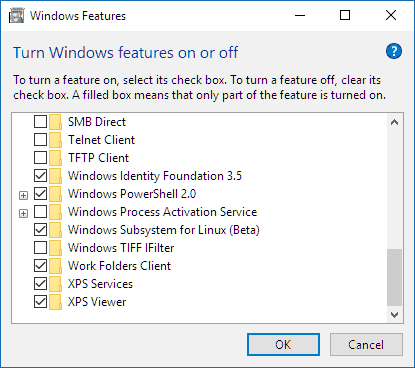

- #TFTP SERVER GUI APPLICATION FOR UBUNTU HOW TO#
- #TFTP SERVER GUI APPLICATION FOR UBUNTU INSTALL#
- #TFTP SERVER GUI APPLICATION FOR UBUNTU PASSWORD#
So Follow the below steps to do the same. etc/sysconfig/vncsevers where we have to define users which we created on Step : 3 and also have to set the resolutions. Now we have to configure the main configuration file of TigerVNC Server i.e. Step : 4 Configure the Resolution for Users in VNC Server ~]$ ls -a # Show Hidden Files & Directories vnc is a hidden directory can be seen by using ls -a command and located at home directory of User. Users passwords are stores in a file called passwd which is located at.
#TFTP SERVER GUI APPLICATION FOR UBUNTU PASSWORD#
“elinuxbook” ~]# su - elinuxbook # Switch to User ~]$ vncpasswd # Set Password to login VNC ~]$ exit This password will used to authentication with TigerVNC Server while taking remote. Once users created we need to Switch to both users using su command and have to generate password for VNC Server.
#TFTP SERVER GUI APPLICATION FOR UBUNTU HOW TO#

Passwd: all authentication tokens updated successfully.Ĭreating the 2nd User i.e.

“elinuxbook” ~]# useradd elinuxbook # Create a User ~]# passwd elinuxbook Note : Here as an example I have created Two users but you can create as much user you want as per your Scenario and Requirement. “ elinuxbook” and “ helpdesk“, Follow the steps below. So create users using useradd command as shown below. Step : 2 Create Users for TigerVNC ServerĪs we can see above TigerVNC Server package installed successfully, now we have to create users for VNC Server. > Package xorg-x11-fonts-misc.noarch 0:7.2-11.el6 will be installed > Processing Dependency: ttmkfdir for package: > Package xorg-x11-fonts-Type1.noarch 0:7.2-11.el6 will be installed > Processing Dependency: xorg-x11-fonts-misc for package: tigervnc-server-1.1.86_64 Loading mirror speeds from cached hostfile Loaded plugins: fastestmirror, refresh-packagekit, security
#TFTP SERVER GUI APPLICATION FOR UBUNTU INSTALL#
~]# yum install tigervnc-server xorg-x11-fonts-Type1 # Install TigerVNC Server Now install TigerVNC Server package using yum repository as shown below. But we can implement extra security layer for VNC ~]# yum -y groupinstall "Desktop" "GNOME Desktop Environment" "X Window System" Like telnet TigerVNC Server not transfers data plain in text format. Here also we have one disadvantage in TigerVNC Server is it used RFB protocol to transfer data over network which is completely not secure but better then telnet. From client side we have tool called VNC Viewer. In TigerVNC Server also we need a Server to instalkl Server application and a client from where we can take remote of VNC Server. Usually the port number of TigerVNC Server is 5901, 5902 but we can customize the port Number. VNC was first invented on year 1998 at AT&T lab in Cambridge. TigerVNC Server is a independent application comes for all kinds of operating systems i.e Windows, Linux, MacOS. It uses RFB (Remote Frame Buffer) protocol to transfer data over network. VNC stands for Virtual Network Computing is a open source application used to share the desktop remotely in GUI (Graphical User Interface) format. In this article we are going to discuss on How to configure TigerVNC Server in RHEL/CentOS/Fedora. TigerVNC Server Configuration – A Remote Desktop Application for Linux Introduction


 0 kommentar(er)
0 kommentar(er)
